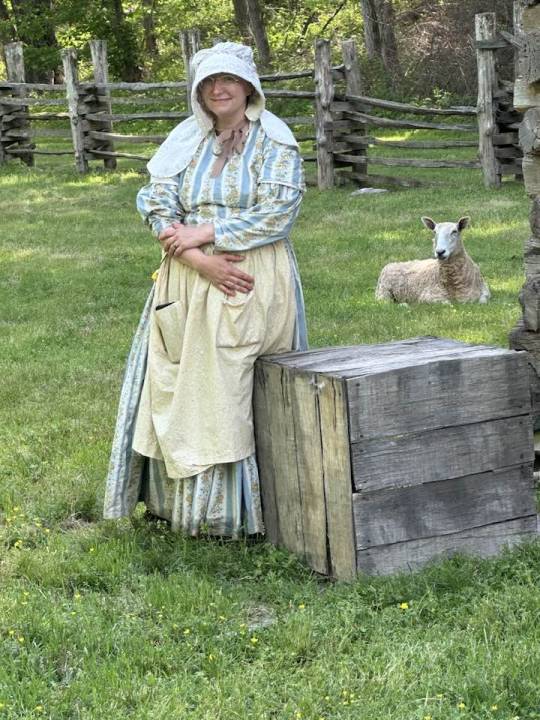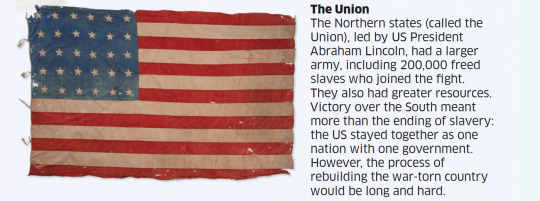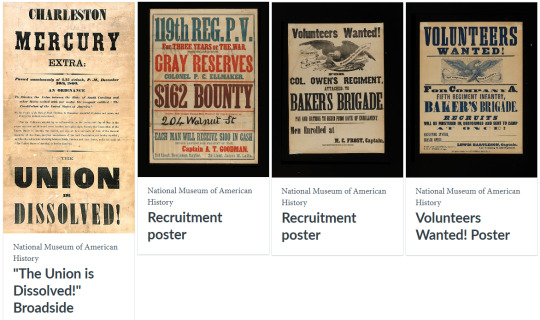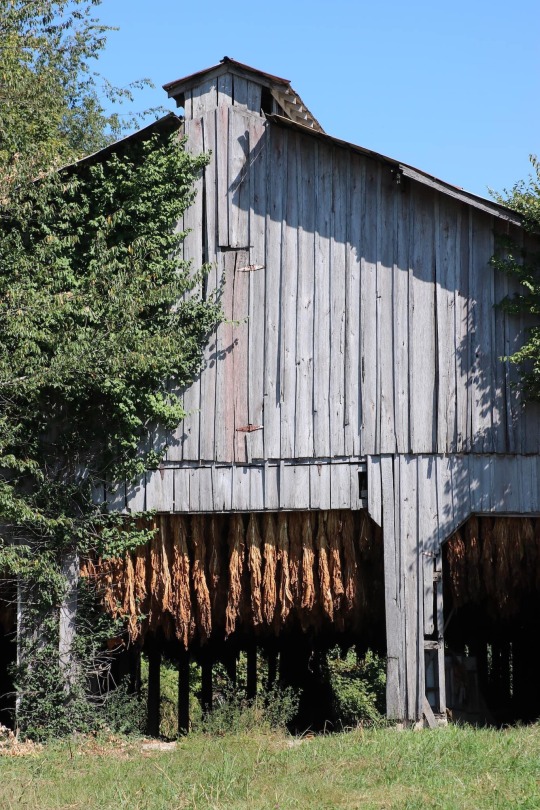#Kentucky Tobacco
Explore tagged Tumblr posts
Text
All You Need to Know About Tobacco Purchasing By-Post Experience
Convenience is one of the key benefits of buying Wholesale Tobacco by post. You can get tobacco by post and have it delivered right to your door while lounging in the luxury of your own home. This gets rid of the need to drive to a store and stand in line to buy something. By post retailers also frequently run sales and discounts that can help you save money.
#Rolling Tobacco#Tobacco Online#Tobacco Wraps#Tobacco Plant#Tobacco By Post#Tobacco USA#Roll Your Own Tobacco#Best Tobacco#Tobacco Leaf By Post#Tobacco Leaf#Tobacco Shop#Wholesale Tobacco#Cigars Online#Flavored Tobacco#Cigars By Post#Flavoured Tobacco#Kentucky Tobacco
0 notes
Text

Grover Hatfield, smoking pipe, listens to Bud McCoy, with York petition, by auto, Cannonsburg, Kentucky, June 1942. The Hatfield and McCoy families were involved in a famous feud in the 1870s-1880s. Title supplied by cataloger. Date: June 1946.
#kentucky#kentucky history#pipesmoking#vintagemen#pipemen#vintage men#retro men#historic photo#pipes#smoking pipe#tobacco pipe#1940s men#1940s#hatfield
9 notes
·
View notes
Text
Supernatural would’ve been even better if they had the brothers be from Appalachia and have accents no this is not me projecting this is my critical media analysis it’s totally not me projecting
#spn#supernatural#sam winchester#dean winchester#imagine it tho#dean saying yins or AT LEAST y’all more#Sam coming up to a body and sayin it smells like kyarn#john should’ve been from Harlan County Kentucky#dean and Sam look like coal miner daughters#MORE SOUTHERN GOTHIC !!!!#tobacco dip and trips to bardstown
1 note
·
View note
Text
A Southern Road Trip
It started out with a road trip heading to Nashville, Tennessee for a tractor show. As always, if time allows, I diverged! What is more fun than finding stops you never planned. Unanticipated finds bring me great joy! Our first planned stop was Patti’ 1880’s Settlement Restaurant in Grand River’s, Kentucky. The Land Between the Lakes is stunningly beautiful! In 2021, we traveled this direction.…

View On WordPress
#1850&039;s Farm#Abraham Lincoln#Abraham Lincoln birthplace#abricultural history#artifacts#Benjamin Harris home#Bill and Patti Tullar#blacksmith shop#Buddy Woodson#chicken house#Civil War#Civil War surrender#Clarksville#Confederate Orphas Brigade#Confederate Whitehouse#cured#dark-fired tobacco#dessert#Dixie#Dover Tennessee#Dr. Elaura Guttormson#Eiffel Tower#Farmall F20#Farmall F30#fences#field#Glasgow#Grand Rivers Kentucky#Grand Rivers Motel#Homeplace 1850&039;s Working Farm
0 notes
Text

My grandparents back in Kentucky owned a tobacco farm. So to make money in the summer we could cut and chop and top and house and strip the tobacco
(George Clooney)
58 notes
·
View notes
Text

In the 90s, my mom used to take me to an antique fair inside a gigantic former tobacco warehouse in Kentucky. There were two booths that sold vintage Star Wars toys. I fell in love. It’s hard to pick a favorite, but I’m partial to this Luke Skywalker (Jedi Knight Outfit) from Kenner’s 1983 release.
22 notes
·
View notes
Note
Hello! I've been enjoying your writing references and notes, thank you for sharing! I was wondering, do you have any for something set during the Civil War? I've been sitting on the idea of writing a short story inspired by Little Women and I want to do it some justice at least. I would be happy with whatever you can offer <3
Writing Notes: The American Civil War
A four-year war (1861–65) between the United States and 11 Southern states that seceded from the Union and formed the Confederate States of America.
The two sides fought over the enslavement of African Americans and the rights of individual states.
The economy of the South relied on enslaving Black people to work on plantations of cotton and tobacco, while in the industrialized North, public opinion was in favor of ending slavery.
The war ended in 1865 with a Union victory.
THE UNION AND THE CONFEDERACY

By February 1861, 7 southern states (South Carolina, Mississippi, Florida, Alabama, Georgia, Louisiana, and Texas) had broken away from the rest of the US.
On 4 February, they agreed to form a separate government, the Confederate States of America.
The first shots of the war were fired at Fort Sumter in South Carolina on 12 April, and within 3 months, Virginia, Arkansas, North Carolina, and Tennessee had joined the Confederates.
23 states remained in the Union, including the slave-owning “border states”.


NEW TECHNOLOGY
The US Civil War was one of the first industrial wars in history, making use of modern technologies developed during the course of the 19th century. The war was fought across a wide area, so railways were critically important in carrying troops and supplies to where they were needed on the front lines. Generals were able to communicate with each other by telegraph.

Weapons. Fast-firing repeating rifles, such as the Spencer rifle, were used for the first time in the Civil War. The widely used “Napoleon” field gun could hit a target up to 1,600 m (5,250 ft) away. Also developed at this time was the Gatling gun, an early machine gun.

Ironclad battleships. Steam-powered battleships protected by iron or steel plates were known as ironclads. The first-ever battle between ironclads was fought in the Civil War in 1862, on the James River estuary in Virginia.

Modern Communications. In the Civil War, railroads moved troops around, aerial balloons spied across enemy lines, and the telegraph (above) sent and received instant information. Its receiver machine recorded messages on paper tape in Morse code, which uses dots and dashes to represent numbers and letters of the alphabet.
WAR PHOTOGRAPHY

The Civil War was one of the first conflicts to be extensively photographed. Dozens of photographers toured the battlefields, and their stark images of soldiers, dead and alive, brought shocking scenes of the war to the public around the world.

A Continental War. Most of the fighting in the war took place in Virginia, Maryland, and Pennsylvania in the east. There were also battles in Kentucky and Tennessee in the west and down the Mississippi River to New Orleans. In 1864, General William T. Sherman (above) conducted a major campaign in Georgia and the Carolinas.
TIMELINE
A nation divided. When 7 US states seceded (broke away) from the Union to form the Confederacy, President Lincoln refused to recognize the new government, and called on them to rejoin the Union. The Confederates refused, and tried to gain control of federal forts in the south. The stage was set for a bloody war that would last for the next 4 years.
12 April, 1861: Fort Sumter attacked. Confederate troops under Brigadier General Beauregard fired on Union soldiers who were guarding Fort Sumter in Charleston, South Carolina. These were the first shots to be fired in the Civil War.
17 September, 1862: Battle of Antietam. The bloodiest day of fighting in the entire war took place at the Battle of Antietam, in which nearly 23,000 soldiers were wounded or killed. The Union army suffered the most casualties, but managed to halt the advance of General Robert E. Lee’s Confederate forces into the Union state of Maryland. The next day Lee was allowed to lead his shattered army back to Virginia.
13 December, 1862: Confederate victory. Fortune swung back to the Confederate side at the Battle of Fredericksburg, in Virginia. General Burnside, newly appointed by Lincoln to command the Union army, led 120,000 troops to attack a Confederate force of 80,000 – by far the largest number of men to meet in any conflict of the Civil War. Burnside was decisively defeated – a victory that gave fresh hope to the Confederates and led to complaints that the Union’s generals were doing a bad job.
1 January, 1863: All slaves to be free. President Lincoln gave new purpose and direction to the war by issuing the Emancipation Proclamation. This was an order freeing all slaves in the Confederate states. Of course, this could not happen until the Union had won the war against the Confederates, but his words would eventually lead to the freeing of millions of African American slaves.
3 March, 1863: First African-American regiment. The first official regiment of African-American soldiers, the 54th Massachusetts Infantry Regiment, was formed to fight in the Union army.
4 July, 1863: Vicksburg captured. Union troops captured the Confederate fortress of Vicksburg, on the Mississippi River, after a 2-month siege. It was a major turning point in the war, coming a day after the Union victory at Gettysburg. The Union now controlled the length of the Mississippi River, dividing Louisiana, Texas, and Arkansas from the rest of the Confederate states, and cutting off supplies.
15 November, 1864: March to the Sea. The capture of Atlanta in Georgia by Union General William T. Sherman in September was a heavy blow to the Confederates. Although deep inside enemy territory, Sherman decided to march his army all the way from Atlanta to the coast at Savannah. He ordered his men to live off the land and destroy farms and factories on their way. This brutal “scorched earth” policy inflicted lasting damage.
9 April, 1865: Lee surrenders to Grant. The Confederate capital of Richmond, in Virginia, fell on 3 April. The Virginian Confederate army was exhausted. To avoid further losses, Confederate General Robert E. Lee surrendered to General Ulysses S. Grant at Appomattox Court House in Virginia. By May, all the Confederate armies had stopped fighting. The war was finally over.
14 April, 1865: Assassination of Lincoln. President Lincoln was shot while attending a play at Ford’s Theatre in Washington, DC. He died the next morning. A funeral train took 14 days to transport his body back for burial in his hometown of Springfield, in Illinois.

The Battle of Gettysburg. The most famous battle of the Civil War was fought over three days, from 1 to 3 July 1863, around the small town of Gettysburg in Pennsylvania. The Confederates attacked, confident they would win, but the Union army did not give way and eventually won. The battle had the heaviest casualties in the war. An estimated 51,000 soldiers were killed, wounded, or listed as missing. Four months after the battle, President Lincoln visited the site and delivered a famous speech known as the Gettysburg Address. In it, he said that the US was “dedicated to the proposition that all men are created equal”.

The Abolition of Slavery. On September 22, 1862, President Lincoln issued the Emancipation Proclamation, which freed all enslaved people in the Confederacy from January 1, 1863. In 1865 Congress passed the 13th Amendment (law change) to the US Constitution, making slavery illegal across the soon-to-be reunited country.
RECONSTRUCTION

African Americans Voting in Richmond in Virginia, 1871
The slow process of rebuilding the economy of the south, left in ruins after the war, is known as Reconstruction. Before rejoining the US, each state of the Confederacy had to agree to amendments to the US Constitution – the supreme law of the nation – that ended slavery, granted citizenship to African Americans, and gave the vote to all male citizens.
Reconstruction ended in 1877, and many southern state governments immediately reversed the new rights given to African Americans, making it hard for them to vote, go to school, or find paid work. They introduced laws that legalized discrimination against Black people that remained in place for almost a century.
Below are objects that serve as evidence of the turmoil leading up to the election and the events that happened immediately after.


Below are objects that show how the Union and the Confederacy dealt with money problems, while also exploring what was considered money then and who produced it.


The objects below belonged to the men and boys who fought on the front lines for both Confederate and Union forces. They represent what soldiers wore, what they ate, how they coped, and what they held dear to them. These items, more often than not, were the only possessions soldiers kept while enlisted; on many are personal touches added by the owner.


Below are a few objects used as weapons by both Confederate and Union armies.

Below are a few objects used by or presented to the leaders of Union and Confederate forces.

For many Americans, both civilian and military, who lived through the conflict, the Civil War was the monumental event of their lifetime. They collected relics as they adjusted to the immediate consequences of the war. The nation grappled with the residual effects of the Civil War for more than a century. Below are objects that evoked different memories from the war.

Sources: 1 2 3 4 5 ⚜ More: Notes & References
It's nice to hear this, thanks so much! <3 Hope these notes help as quick references. Further research might be needed if you're planning to write something more detailed.
#anonymous#writing reference#history#writeblr#dark academia#spilled ink#creative writing#writing inspiration#writing notes#writing prompt#light academia#lit#literature#writing#writing resources
27 notes
·
View notes
Text

Tobacco barn, with harvest drying ...... Oldham County KY. Unfortunately still a cash crop for some parts of Kentucky
38 notes
·
View notes
Text
Tobacco Leaf By Post
Buy high-quality tobacco leaf by post online in the USA. At Roll "N" Wraps, we provide a wide selection of high-quality tobacco leaves and accessories to enhance your smoking experience. For more information, please visit https://www.rollnwraps.com/home1
#Rolling Tobacco#Tobacco Online#Tobacco Wraps#Tobacco Plant#Tobacco By Post#Tobacco USA#Roll Your Own Tobacco#Best Tobacco#Tobacco Leaf By Post#Tobacco Leaf#Tobacco Shop#Wholesale Tobacco#Cigars Online#Flavored Tobacco#Cigars By Post#Flavoured Tobacco#Kentucky Tobacco
0 notes
Text

Old tobacco barn in eastern Kentucky
49 notes
·
View notes
Text

"The original "Uncle Tom",
Rev. Josiah Henson and wife; Dresden ,Canada (c1907)
Josiah Henson (June 15, 1789 – May 5, 1883) was an author, abolitionist, and minister. Born into slavery in Charles County, Maryland, he escaped to Upper Canada (now Ontario) in 1830, and founded a settlement and laborer's school for other fugitive slaves at Dawn, near Dresden in Kent County. Henson's autobiography, The Life of Josiah Henson, Formerly a Slave, Now an Inhabitant of Canada, as Narrated by Himself (1849), is widely believed to have inspired the character of the fugitive slave, George Harris, in Harriet Beecher Stowe's Uncle Tom's Cabin (1852), who returned to Kentucky for his wife and escaped across the Ohio River, eventually to Canada. Following the success of Stowe's novel, Henson issued an expanded version of his memoir in 1858, Truth Stranger Than Fiction. Father Henson's Story of His Own Life (published Boston: John P. Jewett & Company, 1858). Interest in his life continued, and nearly two decades later, his life story was updated and published as Uncle Tom's Story of His Life: An Autobiography of the Rev. Josiah Henson (1876).
Josiah Henson was born on a farm near Port Tobacco in Charles County, Maryland. When he was a boy, his father was punished for standing up to a slave owner, receiving one hundred lashes and having his right ear nailed to the whipping-post, and then cut off. His father was later sold to someone in Alabama. Following his family's master's death, young Josiah was separated from his mother, brothers, and sisters.His mother pleaded with her new owner Isaac Riley, Riley agreed to buy back Henson so she could at least have her youngest child with her; on condition he would work in the fields. Riley would not regret his decision, for Henson rose in his owners' esteem, and was eventually entrusted as the supervisor of his master's farm, located in Montgomery County, Maryland (in what is now North Bethesda). In 1825, Mr. Riley fell onto economic hardship and was sued by a brother in law. Desperate, he begged Henson (with tears in his eyes) to promise to help him. Duty bound, Henson agreed. Mr. R then told him that he needed to take his 18 slaves to his brother in Kentucky by foot. They arrived in Daviess County Kentucky in the middle of April 1825 at the plantation of Mr. Amos Riley. In September 1828 Henson returned to Maryland in an attempt to buy his freedom from Issac Riley.
He tried to buy his freedom by giving his master $350 which he had saved up, and a note promising a further $100. Originally Henson only needed to pay the extra $100 by note, Mr. Riley however, added an extra zero to the paper and changed the fee to $1000. Cheated of his money, Henson returned to Kentucky and then escaped to Kent County, U.C., in 1830, after learning he might be sold again. There he founded a settlement and laborer's school for other fugitive slaves at Dawn, Upper Canada. Henson crossed into Upper Canada via the Niagara River, with his wife Nancy and their four children. Upper Canada had become a refuge for slaves from the United States after 1793, when Lieutenant-Governor John Graves Simcoe passed "An Act to prevent further introduction of Slaves, and to limit the Term of Contracts for Servitude within this Province". The legislation did not immediately end slavery in the colony, but it did prevent the importation of slaves, meaning that any U.S. slave who set foot in what would eventually become Ontario, was free. By the time Henson arrived, others had already made Upper Canada home, including African Loyalists from the American Revolution, and refugees from the War of 1812.
Henson first worked farms near Fort Erie, then Waterloo, moving with friends to Colchester by 1834 to set up a African settlement on rented land. Through contacts and financial assistance there, he was able to purchase 200 acres (0.81 km2) in Dawn Township, in next-door Kent County, to realize his vision of a self-sufficient community. The Dawn Settlement eventually prospered, reaching a population of 500 at its height, and exporting black walnut lumber to the United States and Britain. Henson purchased an additional 200 acres (0.81 km2) next to the Settlement, where his family lived. Henson also became an active Methodist preacher, and spoke as an abolitionist on routes between Tennessee and Ontario. He also served in the Canadian army as a military officer, having led a African militia unit in the Rebellion of 1837. Though many residents of the Dawn Settlement returned to the United States after slavery was abolished there, Henson and his wife continued to live in Dawn for the rest of their lives. Henson died at the age of 93 in Dresden, on May 5, 1883.
#Josiah Henson#Dresden#uncle tom#original uncle tom#american revolution#dawn township#kent county#methodist#preacher#tennessee#ontario#rebellion#dawn settlement#john graves simcoe#province#slaves#united states of america#united states#war of 1812#african#kemetic dreams#afrakan#africans#brownskin#afrakans#brown skin
76 notes
·
View notes
Text

We have a collection of whiskey wine and quality cigars such as Weller, Pappy,Staggir, George T Stagg,E.H Taylor, Jack Daniel,Blanton's, Seagram's 7 Crown,Evan Williams, Southern Comfort, Black Velvet,Kentucky Owl,Henry McKenna,Macallan,Crown Royal,Jameson,etc, Chardonnay, Sauvignon Blanc, Pinot Grigio, Cabernet Sauvignon, Malbec, Merlot, Pinot noir, Shiraz, Grenache,Rioja, Blossom Hill, Champagne,Echo falls, Mionetto prosecco doc treviso brut nv, Prosecco, Cabernet Franc, Châteauneuf-du-Pape, Chianti, Dom Pérignon, Heppington chardonnay, Tempranillo, Yellow Tail.
and Bolivian cigar , Cohiba Cigar, Fuentes Fuentes OpusX , Arturo Fuentes,David off,Padrón,Liga Privada,Romeo y Juliette,My father, Rocky Patel.
https://t.me/tastywhiskieswinesandcigars
cigar cigars cigarlife cigaraficionado cigarporn botl cigarsociety cigaroftheday cigarlover cigarsmoker cigarlifestyle sotl cigarworld cigarsnob smoke cigarphotography habanos cigarsofinstagram cigarboss tobacco smoking cigarculture cigarians nowsmoking cigartime cigarlounge cohiba whiskey cigarsmoking cigarnation united states germany canada australia newzealand finland Switzerland Spain Belgium Europe netherlands finland united kingdom luxembourg bahrain italy whiskey whisky bourbon scotch whiskeygram cocktails singlemalt vodka drinks whiskylover beer bourbonwhiskey whiskeylover whiskygram bar bourbongram whiskyporn gin scotchwhisky alcohol rum wine cheers whiskeyporn cigar liquor jackdaniels tequila cocktail drink
#australia#guys who smoke#moustache#cigar aficionado#cigarlover#cigarboss#cigarsmoke#cigarsmoking#kendrick lamar#miami gp 2024
11 notes
·
View notes
Text
success

dropped my vape in the bathroom trash can so rather than subjecting myself to such indignity i’ve switched to manuals until i can get a new 1 😭😭
#stream#this is STRAIGHT up tobacco & i adore it i’ll be honest#it’s ‘kentucky tobacco flavour’ or whatever the fuck lol#deadass it tastes like mate 😭😭#like …. this is yerba mama …#4500puff/19$ like wow ok werk this is the cheapest i’ve found per puff so swag
3 notes
·
View notes
Note
For the ask game: Johnny Mitchell's Story
Another one of my War of 1812 OCs, poor Johnny Mitchell was inspired from a bit in an academic journal article because of course he was. Kentucky governor/military leader Isaac Shelby resorted to the draft to keep shovelling men at the war:
Further, many of the men who eventually enlisted fell far short of the quality expected by Kentucky officials. After inspecting a group of new recruits, Shelby confided to Harrison that the "greater part of them appeared to [be] men undersize and in other respects hardly Kentuckians." He admitted that "the better kind of people" had avoided military service altogether by hiring substitutes to serve in their stead.
So there you have Johnny: short, working class, and faring poorly at Fort Meigs. I did make him a crack shot and a good soldier, as well as one of the men who would retrieve British cannonballs for an extra gill of whiskey. (He doesn't have a drinking problem, however, I did that with a different Fort Meigs OC.)
Short except behind cut.
——————————
It had been a few days since Nancy saw Johnny at Fort Meigs, and she was eager to find the Kentucky militiaman in the crowds that surrounded her wagon of goods for sale. Her younger sister had accompanied her to the armed camp, to assist with the large assortment of food, stationary, soap, tobacco, and other mess kit essentials that were purchased by the soldiers.
At last Johnny appeared, looking bedraggled from fatigue duty despite his best efforts to brush his clothes and clean his face.
#asks#i have put this man in almost too many predicaments#such as giving him five children by age 32#johnny mitchell
6 notes
·
View notes
Text
Alaska: Igloo, Kodiak bear, Iditarod sled dog race, Denali
Hawaii: pearl harbor, pineapple
washington: Space Needle, apple, mt st helens, rainier national park
oregon: roses, lighthouse, crater lake, oregon trail, hiking
california: redwood tree, white water rafting, gold, golden gate bridge, silicon valley, yosemite national park, wine country, sierra nevada mountains, hollywood, joshua tree
nevada: silver, las vegas strip, hoover dam
idaho: gemstones, potatoes
montana: rocky mountains, glacier national park, grizzly bear, bison
wyoming: yellowstone national park, old faithful geyser, bucking bronco
utah: great salt lake, zion national park, skiing
arizona: lake mead, grand canyon national park, montezuma castle, turquoise, saguaro cactus
new mexico: pueblo, yucca plant, carlsbad caverns
colorado: rocky mountain national park, columbine flower, elk
north dakota: oil, wind energy
south dakota: crazy horse memorial, the badlands, mount rushmore
nebraska: chimney rock, bald eagle, train
kansas: tornadoes, dodge city, sunflower
oklahoma: tomato, wheat, osage shield
texas: cattle, prickly pear cactus, oil refinery, the alamo, NASA Johnson space Center
Minnesota: lake of the woods, wolf, deer
iowa: prairie grass, corn
missouri; Hog, gateway arch
arkansas: razorback hog, banjo
louisiana: crayfish, mardi gras, jazz music
wisconsin: dairy
illinois: Willis tower, tractor, lincoln
michigan: copper, iron ore, automobile manufacturing, motown
indiana: Car
ohio: Rock and Roll Hall of Fame, tires
pennsylvania: street mill, liberty bell
new jersey: constitution
maryland: blue crab
virginia: mount vernon
north carolina: wright brothers national memorial, tobacco farm, great smoky mountains national park, appalachian mountains
south carolina: fort sumter
georgia: peanuts, peach
florida: oranges, kennedy space center, alligator, everglades national park
alabama: cotton, civil rights movement
mississippi: magnolia
tennessee: country music
kentucky: horse racing
west virginia: coal
new york: apple tree, financial market, statue of liberty
massachusetts: american revolution
vermont: maple syrup
new hampshire: fall colors
maine: acadia national park, moose, lobster
And don’t make me repeat it!!!!!!!
7 notes
·
View notes
